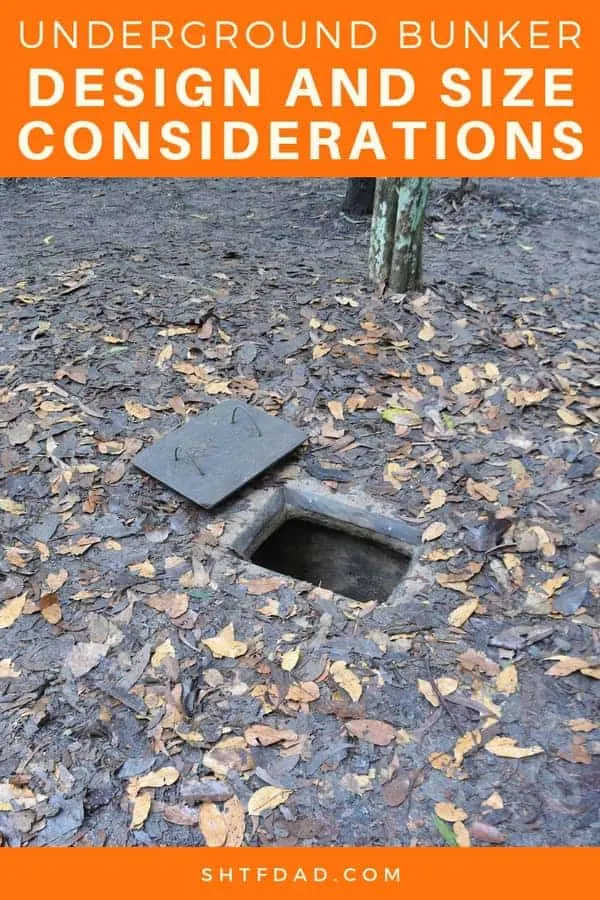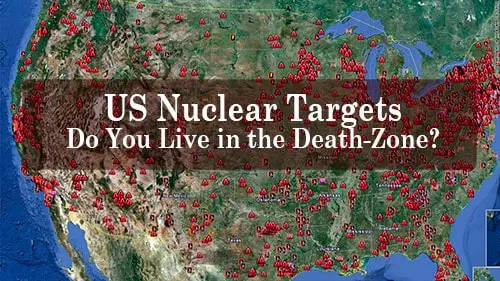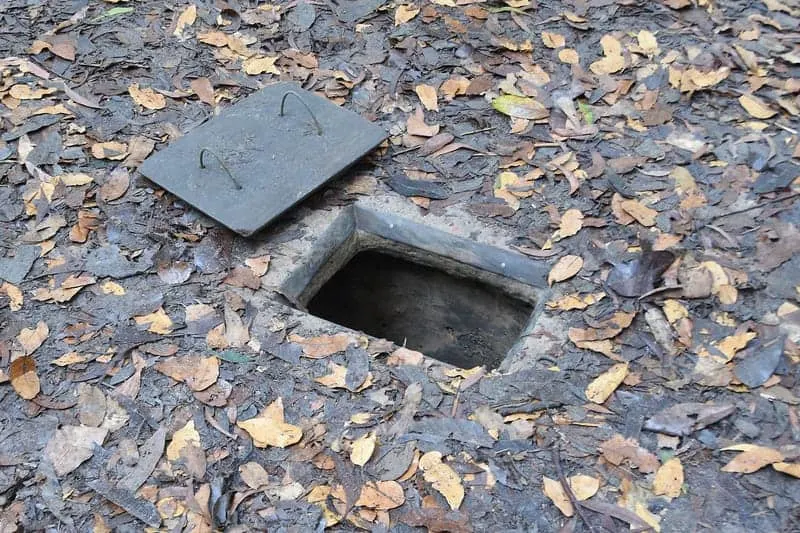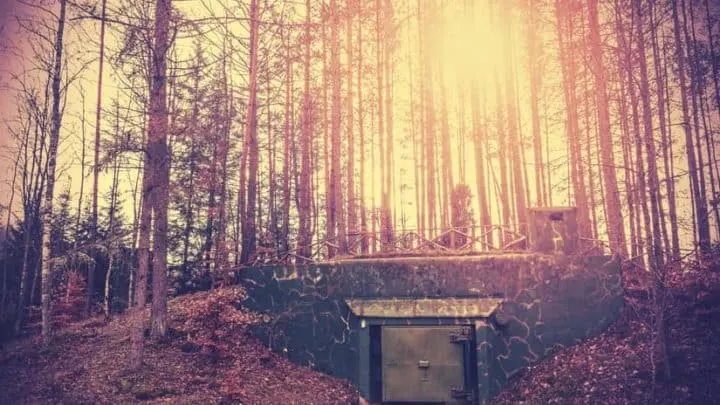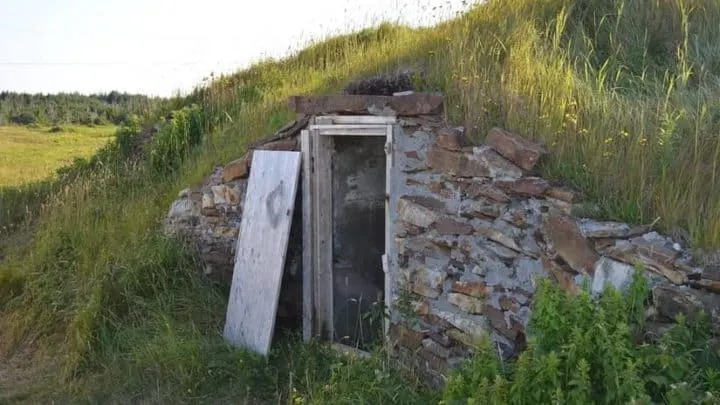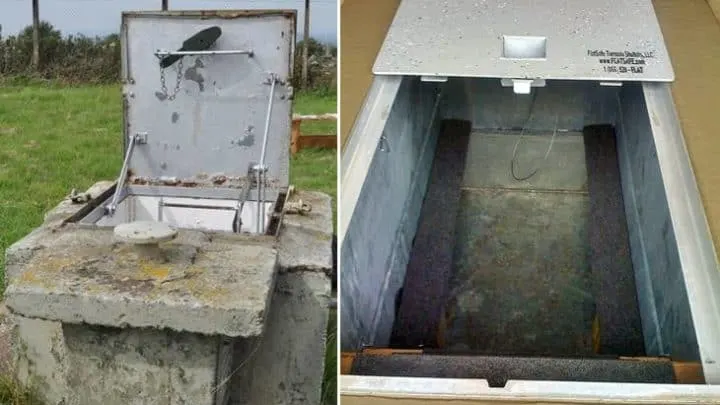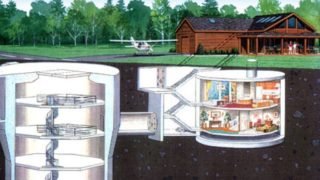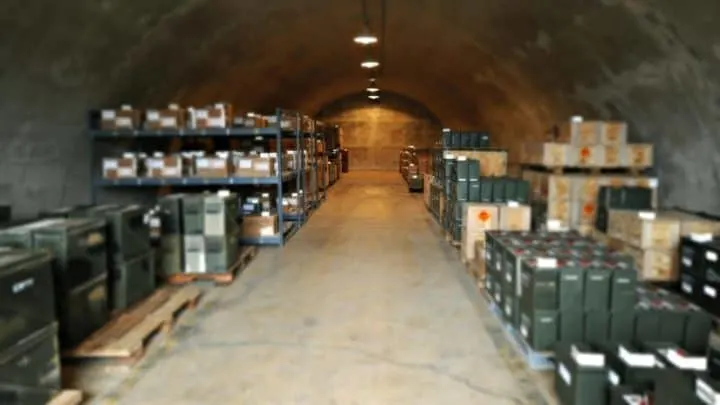SHTFDad may collect a share of sales or other compensation from the links on this page.
Whether you look at prebuilt underground bunkers or create something from scratch you are going to have to consider bunker design.
You need to consider the size and scope of the bunker going into the ground. Beyond that, there is also the layout of the bunker’s interior.
I will be covering all aspects of the decision process, the layout process, and the use (both non-emergency and true emergency) of your DIY underground bunker.
Threats that Affect Bunker Design
The various threats facing us which would lead to requiring a bunker are as broad as they are numerous. These include both natural and manmade threats.
Our fellow man has blessed (ok… cursed) us with more than one reason to shelter underground.
From EMPs to cyber attacks to full-on conventional or nuclear war, the number of events that can affect us is numerous. Those that can directly affect us (war, EMP, comet strike, mega volcano) leave the earth in the least hospitable condition.
Most of the other, more minor, events will lead to a social disruption that we will be happy to have an escape from. So now that we have decided that the benefits of a bunker outweigh the costs let’s look into the potential design factors to choose from for your bunker project.
Scoping Your Bunker Design
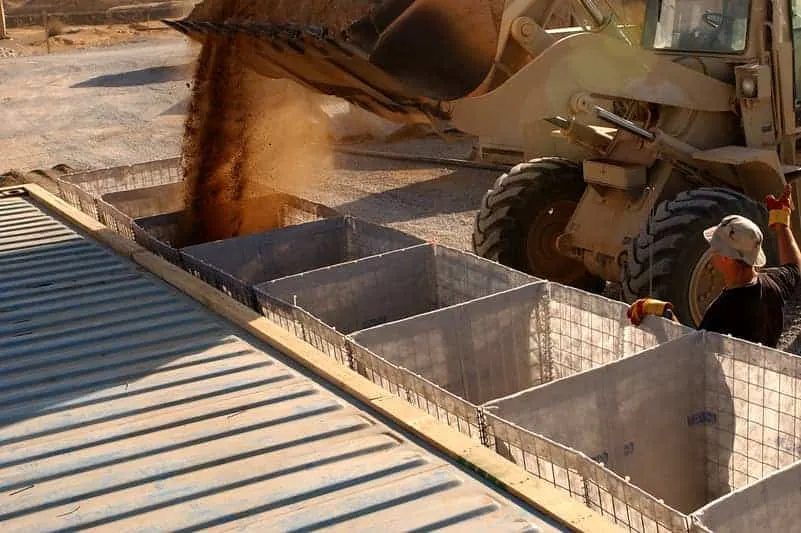
You should start with your threat matrix before you build an underground bunker.
Not to go all “Doomsday Preppers”, but honestly what you are preparing for? Do you have a true need for a fallout shelter?
Is that something that concerns you? Have you ever thought about where you DON’T want to be when SHTF?
What has always guided how you prepare? For example, you will prepare for a tornado very differently than you will prepare for a nuclear war. The threat of a tornado can only be mitigated by having access to a storm shelter.
Do you know what kind of materials you will require to build an emergency shelter that lasts? I bet you haven’t thought about windows or flooring that will last the test of time. If you are preparing for the long haul, you won’t be installing that shag carpet you love so much!
Review those threats that you expect and those you wish to be ready for. This will guide the size, style, and supporting systems of your bunker. A few examples:
Preparing for a Natural Disaster?
You will most likely need a small storm shelter with enough room for your family. In a storm shelter, you need room and comfort to sit and wait for only a few hours to a few days. One or two beds or semi-comfortable chairs will suffice as will a few gallons of water and several snacks.
Preparing for social disruption due to financial collapse or pandemic? You are in the realm for weeks or months holed up in an emergency shelter.
Are you particularly worried about preparing for climate change? Whether it’s a severe hurricane or the next ice age, the layout of your bunker should take into account the risks this kind of weather will present.
Now your bunker design will be much larger with extensive storage space. You will need food and water for months and preferably a waste management system in your emergency shelter. This bunker needs sleeping quarters for all as well as electrical, HVAC, and an extensive food preparation capability.
Preparing for a Nuclear Disaster?
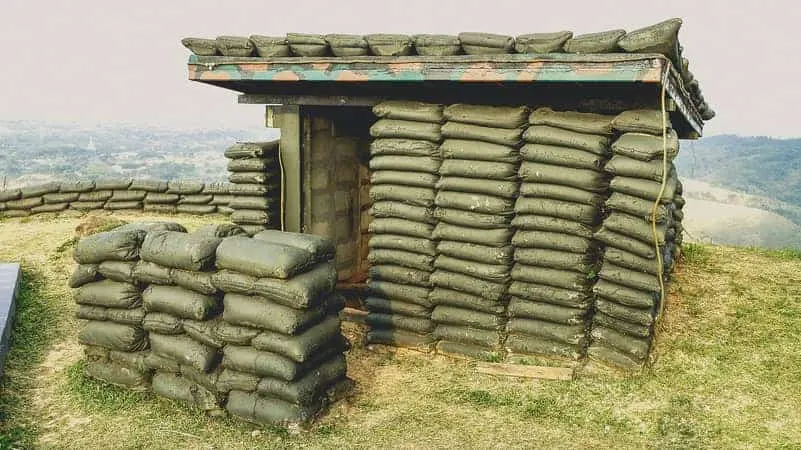
You may be spending the rest of your natural life below ground in a fallout shelter.
When you design a bunker for this it will need complete mechanical systems for water, waste, power, and HVAC in that fallout shelter. Not the least of your considerations will be a private space for everyone and some form of entertainment.
So utilize your threat matrix to ensure that you neither over-build or under-build your doomsday bunker.
There are potential nuclear targets all over the United States… do you live near one?
Never assume you are safe, even if you live in the country or in a small town. Heavily populated are not the only strategic targets! Click the map below to determine if you live near ground zero.
US Nuclear Target Map. Do You Live in The Death-Zone?
Design a Bunker for Length of Stay
Derived from your threat matrix and the scope of the disaster(s) you are preparing for, is the maximum planned length of stay. Are you looking to ride out a single rocky night? Or will you move in on a semi-permanent basis?
Your primary threat will dominate this decision. The design differences between a short stay and a long stay are considerable. Be sure to make realistic decisions about how long you need to stay as this decision will particularly impact the overall size.
With a short-term shelter, the impact of doubling the stay is pretty minor. Locking in for one day vs two is a minor difference. Increasing the size from a one-month stay to six months requires significant additional planning, design, and cost.
So be realistic about the length of stay then add a reasonable buffer and move on with your underground bunker design.
Overall Bunker Layout
Like a shed, determine what you need and double it. Then double it again. Oh, and you’ll probably still need more room.
This is an easy statement for a shed (just buy a few more 2x4s) it is much more impactful for something like a bomb shelter design.
This is the one area that you will spend most of your design time because if you get it wrong it will be difficult to change. So let’s discuss a few things to consider when calculating your final size.
Personal and Living Space
What are you comfortable with for living quarters? Can you manage one room for eating, sleeping, bathing, and socializing, like deer camp? Or do you need separate space for each bunker member?
Do you need two sleeping quarters to make long stays a little more tolerable? Have a family that can’t help but get on each other’s nerves? Consider a single private room in your bunker design “to get away.”
How about the toilet? Is everyone ok with “releasing the hounds” with nothing more than a shower curtain between you and your bunker-mates? Or does your shy bladder require a bit more privacy (and soundproofing)?
How about sprouting or light gardening? After a few months underground how would a fresh salad taste? A small tray of lettuce doesn’t take much room – but where every square inch counts you need to plan ahead for it.
How will you plan the kitchen when you design a bunker? Galley style or must you have a spacious “Kitchen Work Triangle” with freedom of movement and everything in its place?
Would you like all the mechanical systems in one space or are you ok with them spread out and tucked into any available space?
We all need a little separation from time to time whether it be while relaxing, cooking, or mentally solving the current problem of the day. No matter the situation bunker life will be stressful and the ability to have your own quarters will go a long way.
After all, unless your companions have all passed a nuke sub-psych profile it is likely they won’t be used to, or tolerant of, hot racking and all day-to-day activities being carried out.
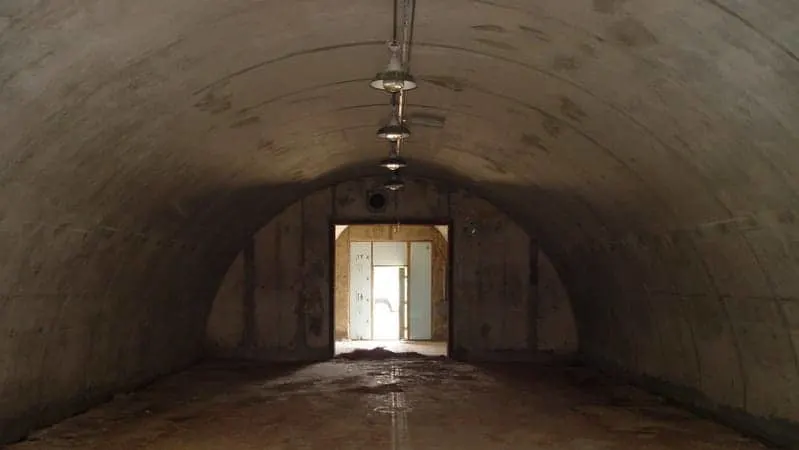
Design a Bunker with Mission Space
Effective bunker design will include a multi-use facility. Besides eating, sleeping, bathing, and socializing you will need other mission-oriented spaces. Some may only require wall space while others will require a large amount of horizontal space.
Are you COMMs focused? Will you need one counter space for your radios and another section of counter for a workbench area capable of light soldering and antenna making?
Is your bunker providing the intelligence Analysis and Control Element (ACE) for your extended group? With that comes individual duty stations, wall space for maps, task assignments, and your local threat matrix.
Even a small planning workspace must be large enough to support a large format map and a few binders.
How about first aid solutions? Do you have the skill sets in your group to provide a care unit? Or does your group have sufficient medical personnel to support a small trauma facility?
Will you need a quarantine space? Maybe you are an armorer and will be providing specialized services as a gunsmith. You will need a basic working space and lockable storage.
Will you plan on having a small work area where you can use a repair shop? Over time things will break and you will most likely not be able to make the home depot run to get a replacement.
Make sure that you have planned your mission spaces as individual units or have the accounted for in multiuse spaces of your bunker. A kitchen table can act as a conference table as well as an operating table if your planning is complete.
These are just a number of things to consider when you design a bunker with mission space in mind.
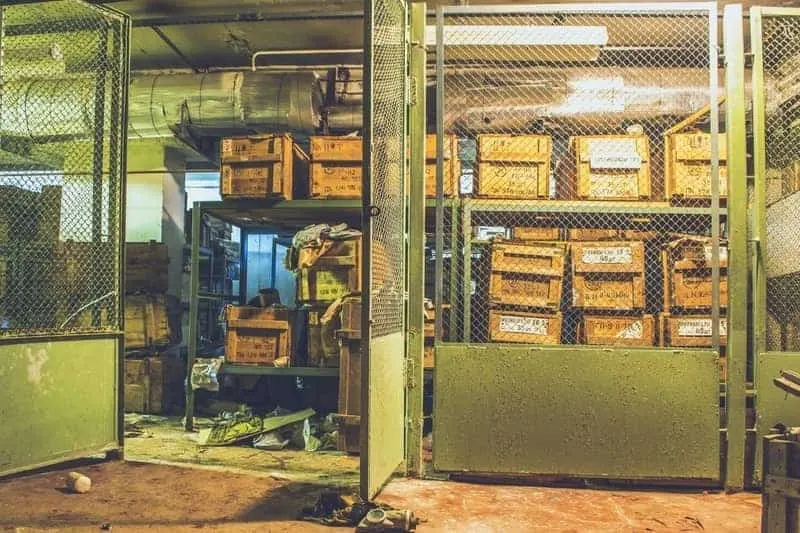
Maximizing Storage Space
Any prepper worth the secret club handshake has stuff. Lots and lots of stuff.
How much of that stuff do we take down below and what does all that require? You really need to consider what essential underground bunker supplies you need, and what you do not.
Beans, bullets, and band-aids just scratch the surface of the goodies we all collect. So how do we organize and manage all that stuff?
What are your storage needs for energy and critical systems? How large will your battery bank be? How much fuel and how many types will you be storing?
Spare Parts
What about spare parts? Break an HVAC belt, break a toilet flange, or blow an LED bulb. Consider having multiples of every critical component and a few parts for the non-critical ones too.
Consumables
Next, consider consumables. How about water filters, air filters, toilet paper, paper towels, and fuses?
Do you know what the best water purification methods are? Do you plan on having a well water system or rainwater catchment? Worst case, will you need to store every drop within your shelter?
- Purification Method: Hollow Fiber Membrane Filter
- Capacity: 1 Gallon Water Filter
- Durable Construction: Made from Polyethylene...
Food
Next is food. Can you afford to store freeze-dried meals only or will you have a mix with bulk items like rice, beans, wheat, and oatmeal?
Don’t forget adjunct foods like coffee, spices, and treats (Momma gonna go underground for six months without chocolate. Yeah right!).
Miscellaneous
Add to the list: medical supplies, defensive needs, clothes, and your library – both educational and entertainment. Include organizational space for spare parts for all your mechanical, water, and electrical systems.
Don’t forget your COMMs equipment and other intelligence supplies (radios, maps, and intel area binders, etc.). Make a comprehensive list of all the items you need to store. Then review it and add more. Wash, Rinse, Repeat.
Do this until you have a comprehensive list. It is better to knowingly take something off the list than it is to have forgotten it 30 days in. Once you have the list, make reasonable estimates of volume and add that to the required size of your bunker design.
Alternate Storage
Of course, we all have budget limitations, but you do not need to limit yourself to only one storage location and style. A viable storage option is to keep some supplies in the bunker and some off-site.
Not all your equipment and supplies may need to be stored in your bunker. In fact, there are several good reasons to store some, if not many, of you supplies off-site.
If your bunker is ever compromised, either by critters or natural forces (e.g. water intrusion) you will still have provisions and supplies available to you (assuming you can get to them in a safe manner).
Secondly, you can save cost when building your bunker (honestly have you considered the size of a year’s worth of toilet paper for a family of four?). By reducing the required storage space you directly reduce your bunker cost. If this is a potential consideration for you then you will need to plan your movements to and from the storage area.
Additionally, you can consider unfinished storage space within your bunker design plans. Unfinished storage space will be significantly cheaper to build than expanded finished living space. The risk is that if your space is intruded upon then all is lost.
The benefit is that you do not have to risk leaving your shelter for a spare roll of TP!
Final Thoughts on Bunker Design and Size
While many might look at this task as something very radical, in some regions, it’s necessary. America spends too much time explaining away its lack of preparedness.
Whether you are already headed down this path or just passing through there are many aspects to DIY underground bunkers that every prepper can benefit from thinking about. However, once you get in deep you may discover the project can get costly and time intensive.
One of the most critical decisions in your project is the size of the bunker. From the length of stay to the private space you need and the primary mission of your team there are various considerations that will drive the size of your bunker plans. Of course, your budget will affect size, as well.
I hope to help guide you on the path to building a bunker that fits your needs perfectly and moves you down the path to being better prepared for even the worst-case scenarios.
Frequently Asked Questions
What minimum ‘spaces’ are needed for an underground bunker?
Sitting and private (e.g. bathroom) are the minimal spaces required for a bunker.
What are the primary mission spaces needed for an underground bunker for a stay longer than 3 days)?
Sleeping, Kitching, Bathroom, and Lounge space are the minimum quarters needed for an underground bunker for a stay of more than a few days.
What are the secondary mission spaces to be considered for an underground bunker?
Medical, Communications, Armory, Mechanical (water, HVAC, electrical), and recreational spaces should all be considered for an underground bunker designed for a lengthy stay.
What are creative ways to save space in an underground bunker?
Designing in multi-use spaces is the key to saving space. This includes fold-out tables for dining tables and workbenches, and collapsible beds (e.g. murphy bed) are all creative uses of limited space.
What are some creative storage spaces in an underground bunker?
Dead space behind walls, under floors, under staircases, and in unfinished portions of bunkers can all store supplies in an underground bunker.
Resources:
Other Bunker Articles You Will Love:
Underground Bunkers: the Ultimate Guide
The definitive guide to underground bunkers. All your ‘why’, ‘what’, ‘where’, ‘how’ and ‘what to stock it with’ questions answered.
10 Reasons to Build an Underground Bunker
There are many reasons to build an underground bunker given the threats we face in this modern age. Here are 10 reasons why you should consider building one.
Underground Bunker Prices: How Much Do They Really Cost?
The full story on underground bunker prices. Whether you go the DIY or commercial route we'll cover it all, from air filtration to waste management.
DIY Underground Bunker Plans: If You’re Going To Bug In, Do It Right
Is bugging out not a viable solution for your family? Perhaps you should consider these DIY underground bunker plans to help alleviate the cost.
9 Essential Underground Bunker Supplies
Have you really taken the time to think about what is required to supply your bunker properly? Here is a list of 9 essential bunker supplies you will need.

